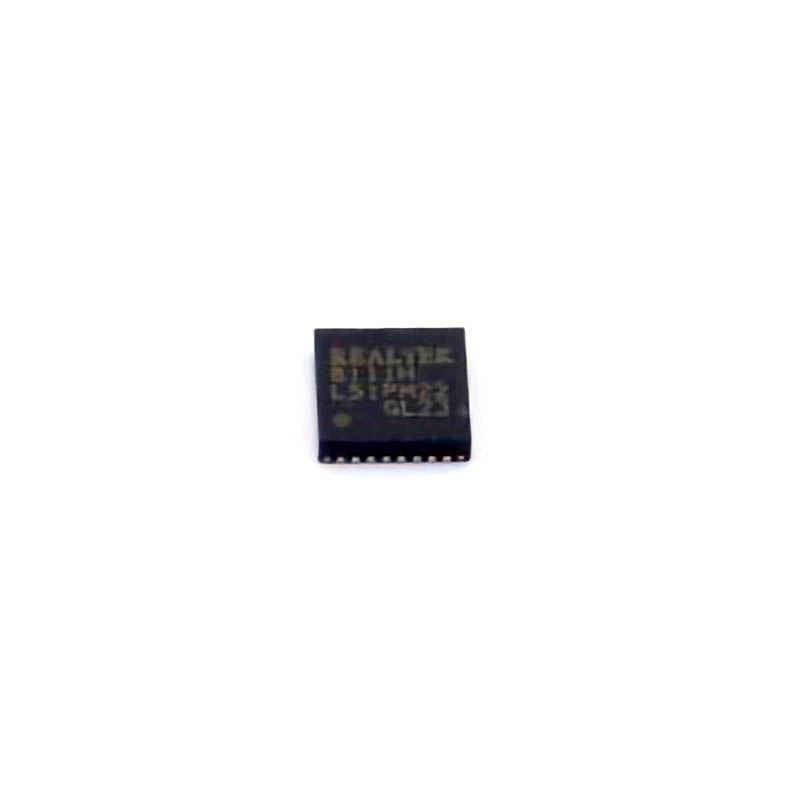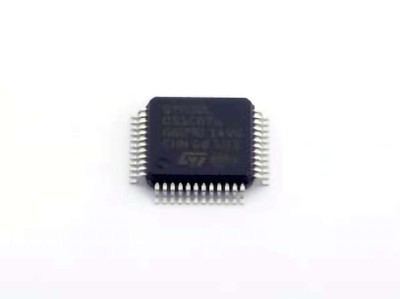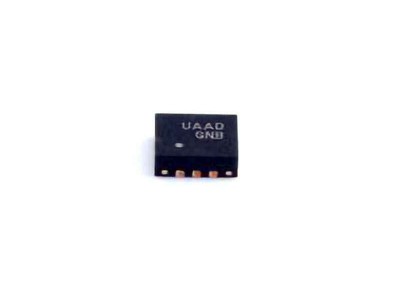
This article offers a comprehensive guide on troubleshooting common issues faced by users of the RTL8111H-CG network interface card. We cover various problems that may arise, such as connection drops, driver issues, and performance inefficiencies, and provide practical solutions to help users optimize their network experience.
RTL8111H-CG, network troubleshooting, Ethernet adapter, driver issues, connection drops, performance optimization, NIC (Network Interface Card), troubleshooting guide, network solutions, hardware issues
Common Issues with RTL8111H-CG and How to Resolve Them
The RTL8111H-CG is one of the most popular and reliable Ethernet network interface cards (NICs) used by consumers and professionals alike. Manufactured by Realtek, this model is typically found in desktops, laptops, and motherboards, serving as the gateway for high-speed wired internet connections. Despite its reliability, users may occasionally encounter issues that hinder network performance or lead to connection problems. This article will walk you through the common problems faced by RTL8111H-CG users and provide practical troubleshooting solutions.
1. Driver Issues and Compatibility Problems
One of the most frequent issues with the RTL8111H-CG is driver-related problems. An outdated, corrupt, or incompatible driver can cause the network interface to malfunction, resulting in slow or no internet connectivity.
Symptoms:
Unstable or dropped connections
No network connectivity detected
Slow download/upload speeds
Network adapter listed as "unavailable" in device manager
Solutions:
A. Updating the Driver
The first step in resolving driver-related issues is to ensure that the latest driver is installed. Realtek frequently releases updates for the RTL8111H-CG to improve performance and fix bugs. You can manually update the driver by visiting the official Realtek website or using the built-in Windows Device Manager tool. Follow these steps:
Open the Device Manager by right-clicking the Start button and selecting Device Manager.
Expand the Network adapters section.
Right-click on RTL8111H-CG and select Update driver.
Choose Search automatically for updated driver software.
Follow the on-screen instructions to install any available updates.
B. Uninstall and Reinstall the Driver
If updating the driver doesn't resolve the issue, you may need to uninstall and reinstall the network adapter's driver:
Go to Device Manager and expand the Network adapters section.
Right-click the RTL8111H-CG and select Uninstall device.
Restart your computer. Windows will automatically attempt to reinstall the default drivers for the network adapter.
C. Rollback to a Previous Driver
In some cases, a newer driver update may cause compatibility issues. Rolling back to a previous version of the driver may solve these problems:
In Device Manager, right-click on the RTL8111H-CG under Network adapters.
Select Properties, then go to the Driver tab.
Click on Roll Back Driver and follow the on-screen instructions.
2. Ethernet Cable or Port Issues
Sometimes the problem lies not with the adapter itself but with the physical components like the Ethernet cable or port. A faulty or improperly connected cable can lead to intermittent connection issues or no connectivity at all.
Symptoms:
No internet connection
Slow connection speeds
Periodic disconnections
Solutions:
A. Inspect the Ethernet Cable
Ensure that the Ethernet cable is securely plugged into both the network interface and your router or switch. Try using a different Ethernet cable to rule out any cable-related issues. If the problem persists, the issue could be with the cable itself, which might be damaged or degraded.
B. Test the Port
The Ethernet port on your computer or router may also be a source of the issue. If you have multiple ports available, try connecting your Ethernet cable to a different port. If the problem is resolved by switching ports, then the original port could be faulty.
C. Use a Different Network Adapter
If you have access to a USB-to-Ethernet adapter, try using it to see if the issue persists. This can help determine whether the problem is with the RTL8111H-CG network adapter itself.
3. Speed and Performance Issues
Users of the RTL8111H-CG may experience slow network speeds even when the hardware is working properly. This can be due to a variety of reasons, such as incorrect network settings, outdated drivers, or external interference.
Symptoms:
Slow download/upload speeds
High ping or latency
Buffering during streaming or video calls
Solutions:
A. Check Network Configuration
Sometimes, performance issues can arise from incorrect network settings. Ensure that your computer is set to automatically obtain an IP address (DHCP) from your router. Additionally, make sure that the computer is connected to the correct network and is not suffering from IP conflicts.
Open Control Panel and go to Network and Sharing Center.
Click on Change adapter settings.
Right-click on the Ethernet adapter and select Properties.
Double-click on Internet Protocol Version 4 (TCP/IPv4).
Select Obtain an IP address automatically and Obtain DNS server address automatically.
B. Optimize Network Performance
You can improve network performance by adjusting the speed and duplex settings of your network adapter. This may help if your network is performing poorly or has high latency. Here's how you can configure it:
Go to Device Manager and expand Network adapters.
Right-click on RTL8111H-CG and select Properties.
Navigate to the Advanced tab.
Look for Speed & Duplex settings and set it to Auto Negotiation or select the highest speed your network can support (e.g., 1.0 Gbps for gigabit networks).
C. Disable Energy Efficient Ethernet (EEE)
The RTL8111H-CG supports Energy Efficient Ethernet (EEE), which reduces power consumption. However, this feature can sometimes lead to slower network performance. To disable it:
Open Device Manager.
Right-click on RTL8111H-CG under Network adapters and choose Properties.
Go to the Advanced tab.
Find the Energy Efficient Ethernet option and set it to Disabled.
Advanced Troubleshooting for RTL8111H-CG Network Interface
While the solutions in Part 1 cover common issues with the RTL8111H-CG, some advanced troubleshooting methods may be required for more complex problems. These methods will help you address persistent network issues that cannot be solved with basic steps.
4. Network Stack Reset
A network stack reset is often an effective solution when dealing with severe connectivity issues, such as a network adapter not working at all or not receiving an IP address. This process clears and restores the networking protocols to their default settings.
Symptoms:
Network connection issues after updating drivers
Unable to connect to the internet despite physical connections
Solutions:
A. Using Command Prompt for a Network Stack Reset
To reset the network stack, follow these steps:
Open Command Prompt as an administrator by searching for cmd, right-clicking, and selecting Run as administrator.
Type the following commands one by one and press Enter after each:
netsh int ip reset
netsh winsock reset
Restart your computer.
This will reset your IP settings and Windows Socket API, which often resolves network issues caused by corrupt configurations.
5. Interference from Antivirus or Firewall Software
In some cases, antivirus or firewall software can block or limit the performance of your network adapter. These programs can mistakenly identify network traffic as malicious and hinder your ability to connect to the internet.
Symptoms:
Unable to connect to the network after installing new antivirus software
Unexplained drop in internet speed or intermittent connection
Solutions:
A. Disable Antivirus/Firewall Temporarily
To test if your security software is causing the issue, temporarily disable it and check if the network connection improves. If the problem resolves when the software is disabled, it may be necessary to configure the firewall or antivirus settings to allow network access for the RTL8111H-CG.
B. Add Exceptions or Change Settings
If you identify that the antivirus/firewall is indeed the culprit, you may need to add exceptions for your Ethernet adapter or adjust the network filtering settings.
6. Hardware Problems
Though uncommon, hardware issues such as a failing network interface card (NIC) or motherboard problems can also cause persistent network problems. These issues are often harder to diagnose, but there are a few signs you can look for.
Symptoms:
No recognition of the network adapter
Constant network drops or freezes
The device manager shows a yellow warning sign next to the NIC
Solutions:
A. Test the NIC in a Different Computer
If possible, test the RTL8111H-CG in a different computer. If the problem persists, it may indicate a hardware failure. You may need to replace the NIC or consult a technician for further diagnosis.
B. Check for Physical Damage
Ensure the network card is properly seated in its PCIe slot (for desktop systems) or that the onboard NIC is undamaged. Any visible physical damage may necessitate a replacement.
7. BIOS Update and Settings Adjustment
In some rare cases, BIOS settings or outdated firmware can affect the performance of the RTL8111H-CG NIC. Issues such as system freezes, slow boot times, or network errors might be alleviated by updating the motherboard's BIOS.
Symptoms:
Random system crashes during network usage
The NIC is not recognized in BIOS or by the operating system
Solutions:
A. Update BIOS/Firmware
Visit the motherboard manufacturer's website to check for any available BIOS updates. Ensure that you carefully follow the update procedure, as a failed BIOS update can render your system unbootable.
In conclusion, the RTL8111H-CG network interface card is an efficient and reliable piece of hardware, but like any technology, it can face occasional hiccups. By following these troubleshooting steps and solutions, you can resolve common and advanced network issues and restore your internet connection to optimal performance. Whether it's a simple driver update or a deeper network stack reset, these solutions will help ensure you stay connected without interruption.
If you are looking for more information on commonly used Electronic Components Models or about Electronic Components Product Catalog datasheets, compile all purchasing and CAD information into one place.


